ZHCSLR2C August 2020 – March 2022 TPS61288
PRODUCTION DATA
7.6 Typical Characteristics
TA = 25°C, fSW = 500 kHz, unless otherwise noted.
TA = 25°C, fSW = 500 kHz, unless otherwise noted.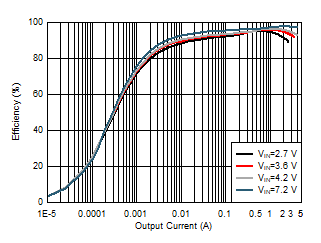
Figure 7-1 Efficiency vs
Output Current VOUT = 13 V. TA = 25°C, fSW = 500 kHz, unless otherwise noted.

| VIN = 2.7 V; 3.6 V; 4.2 V; 7.2 V | VOUT = 13 V | |
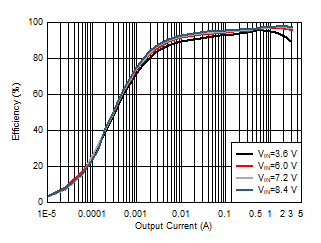
| VIN = 3.6 V; 6 V; 7.2 V; 8.4 V | VOUT = 16 V | |
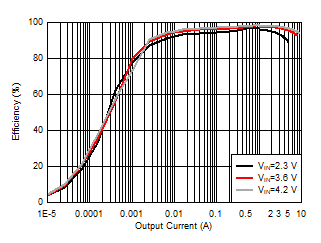
| Separate power VIN and 3.3 V signal VIN | VOUT = 5.5 V | |
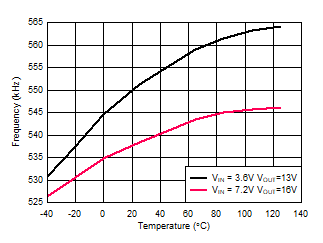 Figure 7-7 Switching
Frequency vs Temperature
Figure 7-7 Switching
Frequency vs Temperature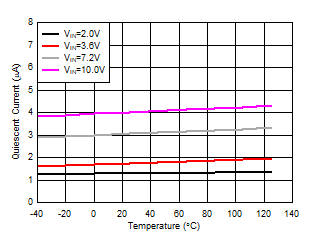
| VIN = 2.0 V; 3.6 V; 7.2 V; 10 V | VOUT = 13 V |
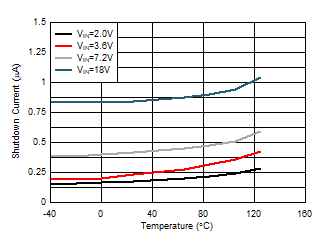 Figure 7-11 Shutdown
Current vs Temperature
Figure 7-11 Shutdown
Current vs Temperature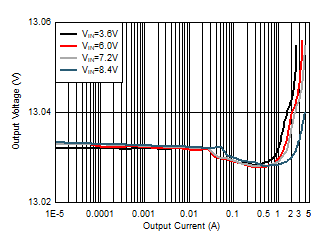
| VIN = 2.7 V; 3.6 V; 4.2 V; 7.2 V | VOUT = 13 V | |

| VIN = 3.6 V; 6 V; 7.2 V; 8.4 V | VOUT = 16 V | |
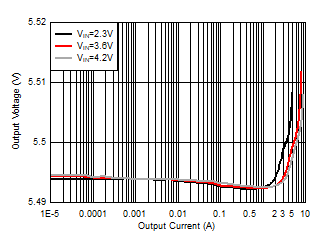
| Separate power VIN and 3.3 V signal VIN | VOUT = 5.5 V | |
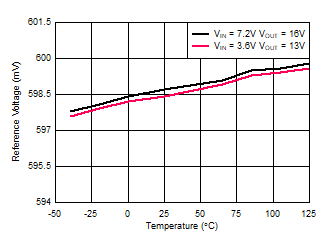 Figure 7-8 Reference
Voltage vs Temperature
Figure 7-8 Reference
Voltage vs Temperature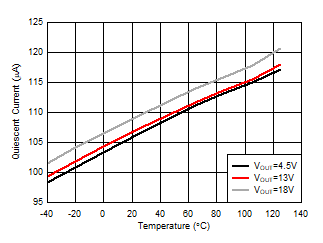
| VIN = 3.6 V | VOUT = 4.5 V; 13 V; 18 V |